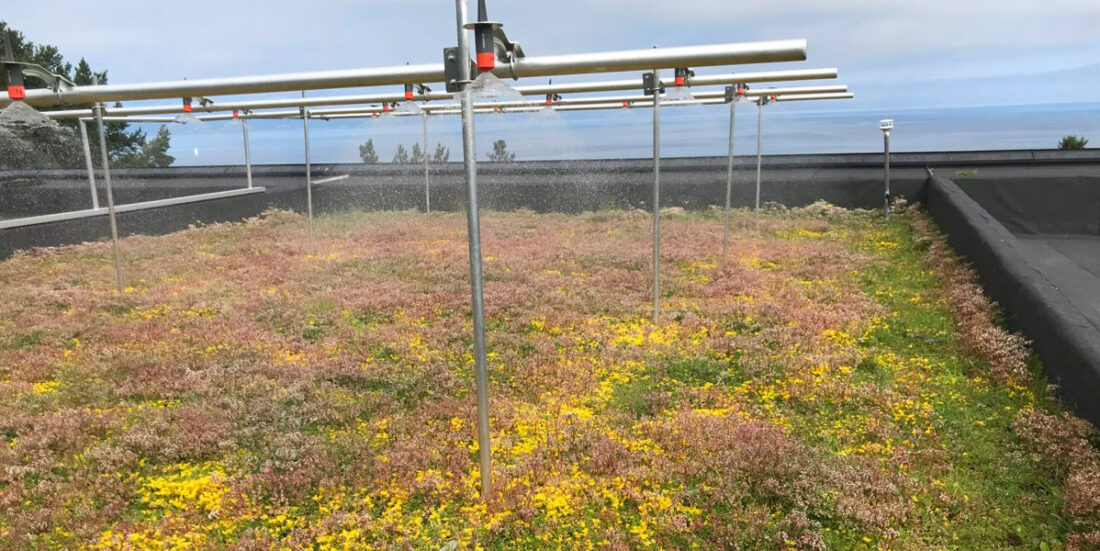‘Blue-green’ roofs can prevent stormwater run-off
Urban growth, densification and climate change are putting increasing pressure on our water drainage systems. We now need better systems to manage the increasing number of uncontrolled stormwater events.
As our towns and cities expand and the climate becomes wetter, natural rainwater drainage patterns in urban areas will change. This has an impact on factors such as the water table and rainwater discharge in urban catchments. One way to reduce problems associated with uncontrolled discharge is to base our stormwater management policies on nature’s own water management principles.
One example of a stormwater management system is the so-called blue-green roof, which comprises a layer of lightweight clinker planted with sedum. The concept can be applied on many types of roofs, on both pre-existing and new buildings.
“In urban settings, up to 40 percent of the area on which rain falls consists of roofs. Stormwater systems installed on roofs in densely built-up areas thus offer the major advantage of not taking up otherwise useful space”, says Edvard Sivertsen, who is a Senior Research Scientist at SINTEF.
SINTEF, in collaboration with researchers at NTNU, has been looking into how such roofs behave under Norwegian climatic conditions, which are both colder and wetter than in locations where blue-green roofs have traditionally been installed. Among the results of their studies has been the report Overvannshåndtering med fordrøyende tak (Stormwater management using detention-based roofs / in Norwegian).
One of the report’s conclusions is that in very many situations, blue-green roofs can make a significant contribution towards preventing uncontrolled stormwater discharge in densely built-up areas.
Blue-green roofs serve to manage stormwater in two different ways. The first is by means of detention, which involves exploiting the natural process of delaying water flow through different layers and materials, allowing it to drain gradually from a roof in the course of hours or days following a rain event.
The second is by means of retention, by which the water is retained and stored in the roof system and then released via evaporation and transpiration through the plants that form part of the system.
- You can read more about the research results from studies into blue-green roofs here (in Norwegian).


